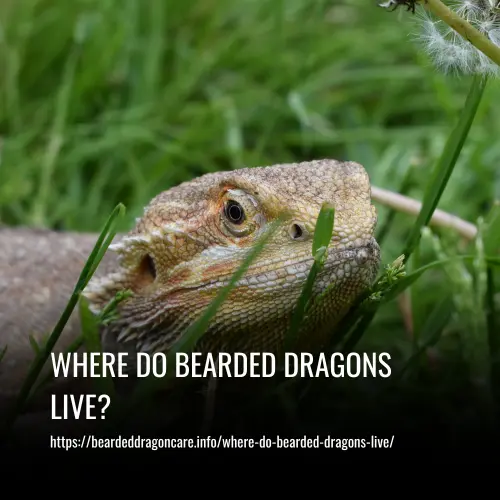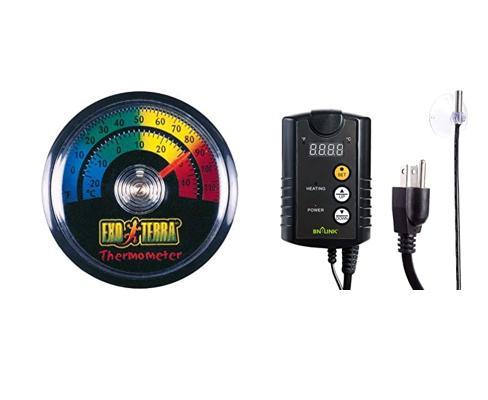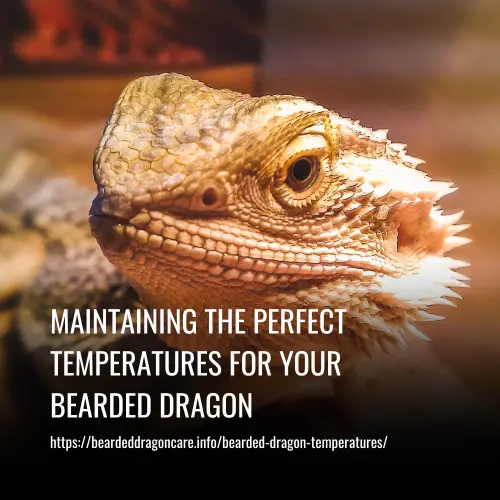Bearded dragons are fascinating creatures that have become popular pets in recent years. They are known for their unique appearance and docile nature, making them great companions for reptile enthusiasts of all ages. One of the most common questions asked by potential or new bearded dragon owners is, “Where do bearded dragons live?”
In this article, we’ll explore where bearded dragons live in their natural habitats. We’ll take a look at the different types of environments they inhabit, including deserts, woodlands, and grasslands. We’ll also discuss how these habitats influence their behavior and health, and what you can do to recreate a similar environment in your home.

Where Do Bearded Dragons Live
Bearded Dragons come from Australia and live in dry areas like deserts and scrublands. They can be found in rocky areas, grasslands, and woodlands where they bask in the sun on flat rocks and fallen logs. While they can also be found in the United States and Europe.
Bearded Dragons also live in suburban backyards where they eat insects, fruits, and vegetables. In their natural habitat, these animals create burrows using their digging abilities and line them with a variety of materials such as leaves and bark. Bearded Dragons prefer areas with low humidity and temperatures below 95°F.
Bearded Dragon Species
Bearded dragons are a type of lizard native to Australia and make popular pets due to their docile nature and variety of colors. There are eight different species, including the Central, Eastern, Western, Rankin’s, Pygmy, Nullabor, Northern, and Coastal Bearded Dragons. They are omnivores, grow up to 24 inches in length, and can live up to 8-10 years in captivity.
The proper care for Bearded Dragons requires a warm and dry habitat that allows for adequate mobility. They can form a close bond with their owners if treated with patience and gentleness. Proper care and feeding can extend their lifespan up to ten years, with the oldest recorded bearded dragon living to be 18 years old. Research is necessary before buying a bearded dragon to ensure proper care and a strong bond.
Why Are They Called Bearded Dragons
Bearded Dragons are named after their behavior when they puff up their throat to attract mates or intimidate predators. When they do this, their spines turn black, giving the appearance of a beard. So, even though they don’t actually have a beard, their behavior and appearance led to their name.
What States Do Bearded Dragons Live in In Australia
Bearded dragons are found in arid and semi-arid environments, mostly in Australia. They are common in New South Wales, Queensland, South Australia, and Victoria. They are adaptable to agricultural development and can also be found in urban areas.
When Did Bearded Dragons Appear in the United States
Bearded Dragons were first introduced to the United States in the 1990s. Since then, they have become very popular as pet lizards and have rapidly expanded their population through domestic breeding. They are now one of the most popular lizard pets in the United States.
What Do Bearded Dragons Eat in the Wild
Bearded dragons in the wild eat a variety of vegetation such as fruits and leaves, invertebrates like ants and beetles, and small vertebrates such as lizards. Ensuring that your bearded dragon receives the proper amount of food is crucial for their overall health and happiness.
Adult bearded dragons should be fed live insects once or twice a day, and their diet should consist of calcium, protein, and vitamins. Adding variety to their diet is also important, including occasional fruits, vegetables, and leafy greens.
What Climate Does A Bearded Dragon Need
A bearded dragon requires a specific climate with temperatures ranging from 38–42 degrees Celsius in the basking area and 22–26 degrees Celsius in the shaded area. They can be sensitive to loud noises and vibrations, so it’s important to keep them in a calm environment.
Be careful with their diet, avoiding vegetables like spinach, broccoli, and romaine, and instead feeding them fruits like apples, strawberries, watermelon, and peaches. They will eat any moving insects. With the proper care, a bearded dragon can live a long and happy life.
What Temperature Can Bearded Dragons Live In
Bearded dragons need to live in temperatures between 75-95 degrees Fahrenheit. They require a basking spot that ranges between 85-95 degrees during the day and can drop to 75 degrees at night. They also need UVB lighting and should not be exposed to temperatures below 65 degrees Fahrenheit.
It’s important to provide a temperature gradient in the tank so that they can move to cooler or warmer areas as they choose. To keep your bearded dragon healthy and happy, make sure to provide appropriate food and bedding, feed them at regular intervals, and create a warm and comfortable environment for them.
Do Bearded Dragons Swim In The Wild
Some Bearded dragons do swim in the wild, although it varies based on the individual lizard. Some may just paddle in shallow water, while others may actually enjoy swimming. They use their puffed-up beard to help them stay buoyant while swimming and still need to breathe above the water level.
Do Bearded Dragons Like Cold Or Warm Water
Bearded dragons prefer lukewarm or warm water between 90 and 100 degrees Fahrenheit. They should not be exposed to cold water. It is important to monitor the temperature of the water, whether it is in a lake, pond, or child’s pool.
Bathing is important for hygiene, shedding, and constipation. Most bearded dragons do not like drinking from bowls, but they will drink their bathwater. Therefore, it is crucial to provide your bearded dragon with clean, fresh water for soaking and swimming.
Do Bearded Dragons Head Bob In Their Natural Habitat
It is believed that Bearded Dragons do the head bob in their natural habitat, particularly in the context of mating. The head bob is used to show dominance over other male competitors and win over females. This behavior may also be used to warn off potential threats, such as humans approaching them.
Are They Able to Get Away From Their Predators Fast
Yes, Bearded Dragons are able to get away from their predators fast. They can reach speeds of up to 9mph, which is quite fast for their size. Even though they spend most of their day basking in the sun, they can use their speed to escape from predators if necessary.
Can Bearded Dragons Be Imported From Australia
Bearded dragons are native to Australia, but there are strict animal export rules in place to protect them. As a result, many Bearded Dragons found in other countries are bred in captivity rather than being imported from Australia. This is also why there are so many different morphs of Bearded Dragons available.
Do Bearded Dragons Have A Mating Season In The Wild
Bearded Dragons do have a mating season in the wild, which is influenced by seasonal changes in their natural habitat. However, in captivity, their mating patterns are different. They are known to mate throughout the year, making it difficult to predict egg clutches. It’s possible that regulated heating used by owners affects their mating habits in captivity.
Are Bearded Dragons Hunted In The Wild
Yes, Bearded Dragons have predators in the wild. They are hunted by birds of prey and dingos, and their wide-set eyes are one of nature’s ways of protecting them by allowing them to monitor their surroundings for potential threats.
Are Bearded Dragons Tame In The Wild
Bearded Dragons are not naturally tame in the wild. They avoid human contact and have no need for humans to get food or entertainment. However, in captivity, they can become accustomed to human interaction and may even enjoy it.
Do Bearded Dragons Hang Out Socially In The Wild
Bearded Dragons do hang out socially in the wild, mainly for mating purposes. They can also bundle on top of each other. However, it is recommended to keep them in separate enclosures in captivity to prevent fighting, especially between males.
FAQs
Do Bearded Dragons Get Stressed In Their Natural Habitat?
Yes, Bearded Dragons can experience stress in their natural habitat. However, stress marks are more commonly seen in captivity due to mistakes made by their owners. It’s important to provide a suitable environment for your pet and to monitor their behavior for signs of stress.
Are Bearded Dragons Endangered?
Bearded dragons are not currently endangered because they have a large range. However, two subspecies of the Pogona barbata are classified as vulnerable. Only one species, Pogona vitticeps, is sold in the pet trade.
Are There Still Wild Bearded Dragons?
Bearded dragons are still present in their natural habitat in Australia. They can be found in various parts of the country, including semi-arid and arid environments. The Eastern Bearded Dragon can be found in several states, such as New South Wales, Queensland, South Australia, and Victoria.
How Many Bearded Dragons Are In The World?
It’s difficult to determine the exact number of bearded dragons in the world, but there are eight different types of bearded dragons in the Pogona genus. Each type has its own unique colors and behaviors, and the solena barbata is the only one that comes in both large and small sizes.
Are Bearded Dragons Venomous?
No, bearded dragons are not venomous, but they can still bite. To prevent any health issues, it’s important to keep your bearded dragon clean and avoid getting them sick. Keep their environment clean, avoid sneezing near them, and be aware of their behavior to avoid any aggression. By taking good care of your pet, you can ensure their health and safety.
What Happens If A Bearded Dragon Bites Me?
A bearded dragon’s bite typically causes minor injuries such as a sore finger or a few stitches. However, in rare cases, the bite can cause severe damage such as breaking bones in the fingers. It’s important to stay calm and follow the next steps after being bitten by a bearded dragon.
Conclusion
In conclusion, bearded dragons are fascinating creatures that can make great pets. Understanding where they come from and their natural habitat is crucial in providing them with a comfortable and healthy environment.
Whether you’re a seasoned reptile owner or a first-time pet parent, taking the time to learn about your bearded dragon’s needs and preferences will ensure a happy and fulfilling life for your scaly friend.

